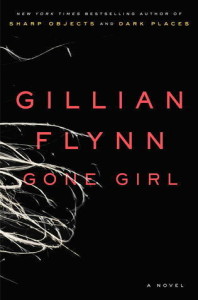The Best Book You’ve Never Read: ‘Dancing Lessons for the Advanced in Age’
On the Publishers Weekly blog Gabe Habash describes what can be an elusive concept, narrative voice:
Books that are voice-driven are, of course, dependent on the strength of the voice. Think about the best character-narrators you’ve read: maybe it’s Scout or Holden Caulfield or Humbert Humbert. Our favorite narrators have voices that we, as readers, have a desire to keep consuming; their words are as addictive as M&Ms. There’s a powerlessness, a relinquishing, involved when you read a great first-person book, when you fall head over heels–simply through the hypnotic rhythm of the narrator’s words, you choose to give up your own agency in untangling events for yourself and sort-of smittenly accept the narrator’s. The narrator, simply by virtue of his/her voice, gets you to listen.
Why We Can’t Get Enough of Twisted Marriage Thrillers

A new wave of bestselling novels depict the dark side of marriage with secretive husbands and betrayed couples. Lucy Scholes on what they reveal about matrimony today—and their literary ancestors.
A look at the popular appeal of novels like Gillian Flynn’s Gone Girl and S. J. Watson’s Before I Go to Sleep. Scholes’s discussion of the literary history of this theme is informative. And, if you are as intrigued as I am by these psychological narratives, you’ll appreciate her list of forthcoming books in the same vein.
Farewell Bridget Jones – hello literary bad girls
The [U. K.] Guardian has news of another current literary trend:
With their descriptions of nights out gone wrong and no-holds-barred sexual encounters, a clutch of newly released novels are full of women behaving badly. From Zoe Pilger’s raucous debut, Eat My Heart Out, published this month, to Caitlin Moran’s semi-autobiographical How to Build a Girl, which aims to capture that “moment when you try to discover exactly who it is you’re trying to be”. In February Helen Walsh, whose 2005 novel Brass shocked reviewers with its frank depiction of twentysomething female sexuality, brings out her fourth novel, The Lemon Grove, an atmospheric story of middle-aged female sexuality. In May, Emma Jane Unsworth’s second novel, Animals, memorably described as “Withnail for Girls”, hits the shelves.
But what’s driving this new crop of female antiheroes? Unsworth, 35, who drew on her own friendships for Animals, a gloriously over-the-top account of female friendship, says it’s partially a desire for something new.
What’s Become of the So-Called Literary Bad Boy?
But all the literary news isn’t about the women, although this discussion is more about the persona writers create for themselves than about the characters they create on the page.
James Parker argues that all the great literary bad boys are in the past:
In 2014 we have bad-boy chefs (Bourdain, Ramsay), bad-boy priest-comedians (Russell Brand), bad-boy athletes (the demonic Uruguayan soccer player Luis Suárez). Inspiration and transgression are still tangled up for us, at some level. And it’s possible, I suppose, that some young wordslinger could come along and wring a new twist from the tired repertoire of writerly naughtiness — be a postmodern literary bad boy. But in the end, who cares?
Although these New York Times pieces are set up in the point-counterpoint format, Rivka Galchen’s argument doesn’t seem all that different from Parker’s:
And I would argue that certain traits we associate with the “literary bad boy” . . . have little to do with the genuinely countercultural thinking or the intelligently transgressive prose. Instead they are, upon inspection, just the fairly straightforward qualities of persons with more financial or cultural or physical power who exercise that power over people with less. There’s nothing “counter” about that, of course; overpowering in that way implicitly validates things as they are, and implies that this is how they ought to be. So I presume that when we value literary-bad-boy-ness — and there is a lot to value there — those traits wouldn’t be, if we thought about it, the essence of bad-boy-ness; those traits aren’t even distinctive. They’re just trussed-up versions of an unfortunate norm.
Book Review: Books as History by David Pearson. Obsolescence Guaranteed?
Here’s another wrinkle in the printed books vs. ebooks discussion, the book as object:
The book as object is part not only of the history of communication, but also of art and design.
A book can be altered, beautified or cherished in ways that produce unique objects worth preserving. Each generation leaves its marks: inscriptions, annotations, bookplates, new bindings, armorial stamps, defacements. Readers also often add useful details omitted in the texts. As such, printed books have their own histories which become part of our wider historical heritage and evidence base. Pearson argues that e-books and tablets simply won’t offer these unique, telling attributes.
The Coolest Places On Earth To Read A Book
You must see these 8 photos on Huffington Post. They might influence the plans for your next vacation.
